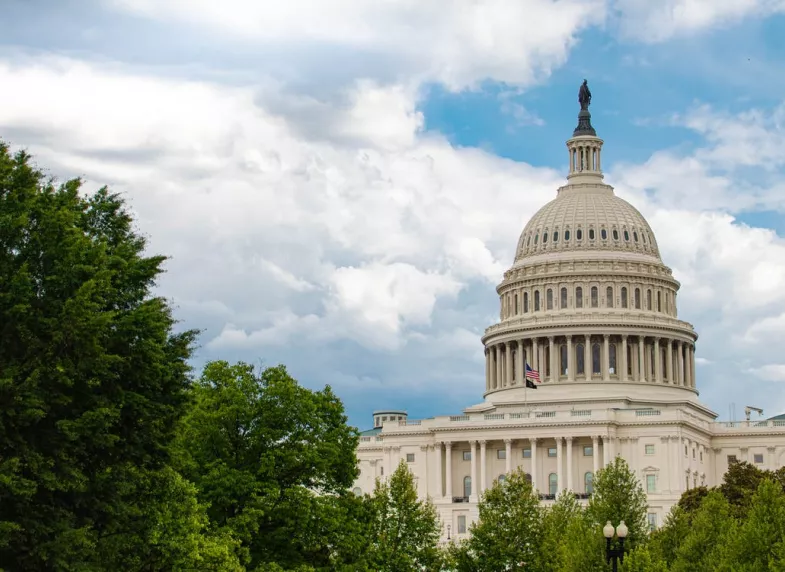The Inflation Reduction Act and Phius
Phius Policy Specialist Isaac Elnecave breaks down some important aspects of the recently passed Inflation Reduction Act
Phius Policy Specialist Isaac Elnecave breaks down some important aspects of the recently passed Inflation Reduction Act

President Joe Biden’s recent signing of the Inflation Reduction Act was a critical step in the path to zero.
The impact on our industry will stretch far and wide, including bolstering current tax credits and incentives for highly energy efficient buildings and jump-starting the demand for high-performance building components by incentivizing their use – in turn reducing cost and encouraging further technological development. The rebates and tax credits included in the legislation will also go a long way toward mitigating some of the current up-front costs of building to the Phius standard.
Following is a breakdown of some key items related to building energy efficiency included in the Inflation Reduction Act, accompanied by explanations of how each impacts our work at Phius.
The legislation provides $330 million in grants to states and local governments to adopt the latest energy codes that meet or exceed the 2021 International Energy Conservation Code (IECC) and/or ASHRAE 90.1-2019. It also provides an additional $670 million for states and localities to adopt and implement zero-energy stretch codes.
The Phius standard, which includes the net-zero standard Phius ZERO, has been included in a number of state and municipal energy codes including: Massachusetts, New York, Illinois, Washington, Chicago and Denver. This funding provides an important opportunity for Phius and Phius affiliates to work with these and other states and municipalities to both include Phius into other state and municipal energy codes and incorporate tools to assist with compliance.
The bill provides $4.275 billion to state energy offices to establish a rebate program. The rebates may be used for appliance upgrades such as heat pumps, electric stovetops/ovens, as well as non-appliance upgrades such as insulation, electric wiring, and ventilation. The legislation also provides $225 million for grants to Tribal Nations to develop and establish high efficiency electric home rebate programs.
The majority of Phius projects incorporate many of these items. With proper planning, this rebate program can significantly reduce the cost of construction on Phius projects.
Section 45L will be extended for 10 years as part of the legislation. This provides eligible single-family homeowners a $2,500 credit for meeting Energy Star requirements and $5,000 for meeting the Department of Energy’s zero energy ready home program. Multifamily credits are available for the same amounts per unit if the building meets prevailing wage requirements. Otherwise, the multifamily credit is up to $500 for meeting Energy Star requirements and $1,000 for meeting the DOE’s zero energy ready home program.
All Phius projects that are eligible for the Energy Star program and the DOE ZERH must achieve these certifications prior to receiving the final Phius certification meaning most Phius projects are eligible for this tax credit.
Section 179D has been altered by the new legislation. There are now two tiers for the deduction. The first tier has a lower base deduction of $0.50/ sq. ft. if buildings outperform the identified ASHRAE standard by 25%. That can be increased to up to $1/ sq. ft. based on how much the annual energy and power costs are reduced beyond 25%. The second tier has a higher base deduction of $2.50/ sq. ft. and up to $5.00/ sq. ft. if the building also meets the prevailing wage and apprenticeship requirements.
As with the 45L tax credit, most, if not all, commercial projects meeting the Phius standard would meet this threshold and be eligible for this tax credit.
The bill ensures that energy credits do not negatively affect LIHTCs. Eligible entities claiming both an energy credit and a LIHTC are not required to reduce their LIHTC basis for credits claimed.
Inclusion in the Qualified Allocation Plans of state LIHTC is a major component of the Phius policy framework. Currently, Phius is included in 15 states across the country. This small, but meaningful change should make it somewhat more attractive for developers to include Phius as part of their proposals to receive the LIHTC.
The full impact of this legislation won’t be known for some time, but it represents a long overdue tangible commitment by the federal government to combat climate change – specifically in the built environment. We hope this action spurs more policy change on the federal, state and local levels, but in the meantime we will do everything in our power to help our constituents take full advantage of these new benefits as we continue on our journey to a net zero future.